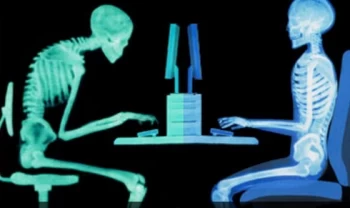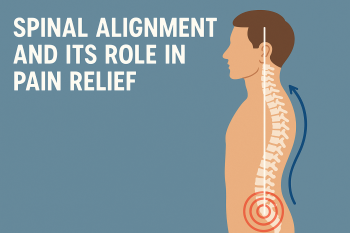
Understanding Cervical Myelopathy
Cervical myelopathy is a condition that involves spinal degeneration and its effect on the spinal cord and nerves. The cervical spine is the top portion of the spine and consists of 7 segments, called cervical vertebrae. The seven bones of the neck provide a base of support for the weight of the head (7-10 pounds on average) as well as a wide range of movement.
When abnormal alignment and mechanical function occurs in the segments of the neck, degenerative changes (also known as spinal arthritis, osteoarthritis, spinal degeneration, etc.) begin to develop. While many consider this process to be a normal process of aging, there is a wide range of effects across various age ranges. This indicates that although this problem gets worse over time, it is not necessarily a normal process of getting older.
Myelopathy is a term that describes spinal cord compression, irritation, or damage subsequent to spinal degeneration. As the conduit of the spinal cord and nerves, the cervical spine segments play a vital role in protecting the spinal cord. When the structural integrity of the spinal segments becomes compromised there is an increased risk of developing cervical myelopathy.
Cervical Myelopathy Symptoms
The symptoms of cervical myelopathy are various and widespread. Usually, the onset of symptoms related to cervical myelopathy start between the ages of 50-70 and men are more commonly affected than women. Since the spinal cord houses all nerve fibers below the brain, there are widespread symptoms associated with cervical myelopathy.
Common cervical myelopathy symptoms include:
- neck pain
- arm and/or leg weakness
- muscle spasms or tremors in the legs and feet
- loss of feeling in the arms or hands
- balance and gait issues
- loss of dexterity
- urinary urgency (sudden and intense urge to void the bladder)
- urinary incontinence (bladder leakage)
Cervical myelopathy symptoms vary in intensity depending on how to advance the problem is and the extent to which the spinal cord and nerves are affected. Individuals with a smaller-than-average spinal canal may have an increased risk of cervical myelopathy due to the smaller free space available for the spinal cord.
Cervical Myelopathy Causes
As a degenerative process of the cervical spine, cervical myelopathy is caused by prolonged abnormal spinal stress. The cervical spine is capable of a wide range of movement and should maintain a free and active range of motion in normal circumstances. High energy injuries to the neck are often the first domino in a series of events that cause cervical myelopathy. These injuries cause damage to the supportive tissues of the spine including ligaments, muscles, joint capsules, and fascia.
High energy injuries to the cervical spine include:
- motor vehicle accidents
- whiplash
- sports injuries/concussion
- blows to the head
- slips and falls
These injuries can disrupt the normal alignment of the neck causing wear and tear to develop over time. Abnormal alignment produces abnormal mechanics, and Wolf’s law states that bone tissue experiencing abnormal mechanical stress will remodel or degenerate in response to this stress. Over time, the progression of arthritis in the neck can protrude into the center of the spine (the spinal canal) irritating the spinal cord.
Degenerative disc disease is another process that serves as a risk factor for cervical myelopathy. This occurs when abnormal weight distribution of the neck leads to the increased loading on the discs in between the segments of the neck. As these discs thin, arthritis develops and cervical myelopathy may occur over time.
Individuals who have experienced cervical spine trauma early in life may be at an increased risk for the development of cervical myelopathy. If you experienced a significant sports injury (concussion, stinger, etc.) or car accident before the age of 25 it is important to have your cervical spine evaluated for any injury that may in time lead to the onset of cervical myelopathy.
What to do About Cervical Myelopathy
Treatment options for cervical myelopathy are typically invasive and may have additional negative side effects. In advanced stages with significant spinal cord damage, spinal surgery is often recommended. These costly and potentially dangerous surgeries are the last resort option, and surgical outcomes for patients with cervical myelopathy vary widely. This means that some individuals who undergo surgery still have pain and symptoms afterward.
Less aggressive medical treatments include spinal injections and pharmaceutical treatments focused on dulling the symptoms of cervical myelopathy.
Conservative and natural treatment options are available and are the first line of defense for finding relief and slowing the progression of the cervical condition. As a structural condition, structural treatments that are targeted and precise can be extremely effective.
Upper cervical chiropractic care is a safe and effective treatment option for cervical myelopathy patients. Upper cervical chiropractic care is focused on identifying and correcting upper cervical spinal subluxation. This condition underlies the onset of cervical myelopathy in many patients.
The upper cervical spine can sustain structural displacements with trauma that begin the process of nerve irritation in the cervical spine. As the foundation of the skull, a displacement in the balance and alignment of the upper neck causes increased wear and tear on the joints, discs, ligaments, and tissues of the cervical spine as the weight of the head (7-10 pounds) shifts away from its normal center of gravity.
Upper cervical subluxation may be the most common injury initiating the onset of cervical myelopathy and serves as a conservative and effective avenue for treatment in cervical myelopathy patients.
Cervical Myelopathy in Adults
As an age-related condition, adult patients ages 50-70 are most commonly affected by cervical myelopathy. These patients have usually sustained a series of cervical spine injuries over the years that have compounded to cause cervical myelopathy.
Cervical Myelopathy in Children
Cervical myelopathy in children is extremely rare and is a medical emergency. Cervical myelopathy in children is often caused by serious conditions such as spinal meningitis, tumor, or spinal fracture.
Children who are experiencing nerve-related symptoms that are not related to series conditions such as those listed above may also benefit from upper cervical chiropractic care. Neurological irritation in the upper spine can mimic the symptoms of the cervical condition in children, and targeted care focused on correcting the structural alignment of the upper cervical spine can not only alleviate these symptoms but also reduce the risk of developing further issues later in life.
Chiropractic Diagnostic Testing for Cervical Myelopathy
Cervical myelopathy is most commonly diagnosed with advanced imaging and another nerve-related testing. Magnetic resonance imaging (MRI) is extremely accurate for diagnosing the areas of the spinal cord that are affected by cervical myelopathy. MRI imaging can also detect bulging and degenerated discs that may also be underlying cervical myelopathy.
Chiropractic testing will also include advanced imaging such as digital x-ray or cone-beam computed tomography (CBCT) to evaluate the structural integrity of the cervical spine. This also provides the blueprint for safe and effective adjustments to the cervical spine without twisting, popping, or cracking.
Additional testing may include:
- paraspinal thermography
- posture testing
- surface electromyography (sEMG)
- heart rate variability (HRV)
- balance and coordination testing
All of these testing procedures serve as the baseline testing to evaluate the severity of your condition and your individualized treatment plan.
Chiropractic Treatment for Cervical Myelopathy
Upper cervical chiropractic treatment for patients with cervical myelopathy will focus on correcting the structural issues of the upper portion of the spine. Targeted and precise adjusting procedures will be performed using specialized equipment to ensure a safe and effective adjustment that lasts. Upper cervical chiropractic care is corrective in nature, which means that most patients do not require frequent adjustments to notice dramatic improvements in their health and wellbeing.
To find out if you are a candidate for upper cervical chiropractic care, simply complete the consultation request form and a doctor will follow up with you to schedule a complimentary consultation. You can also use the locate a doctor function at the top of the page to find the certified Blair Upper Cervical chiropractor closest to you.







Leave a comment